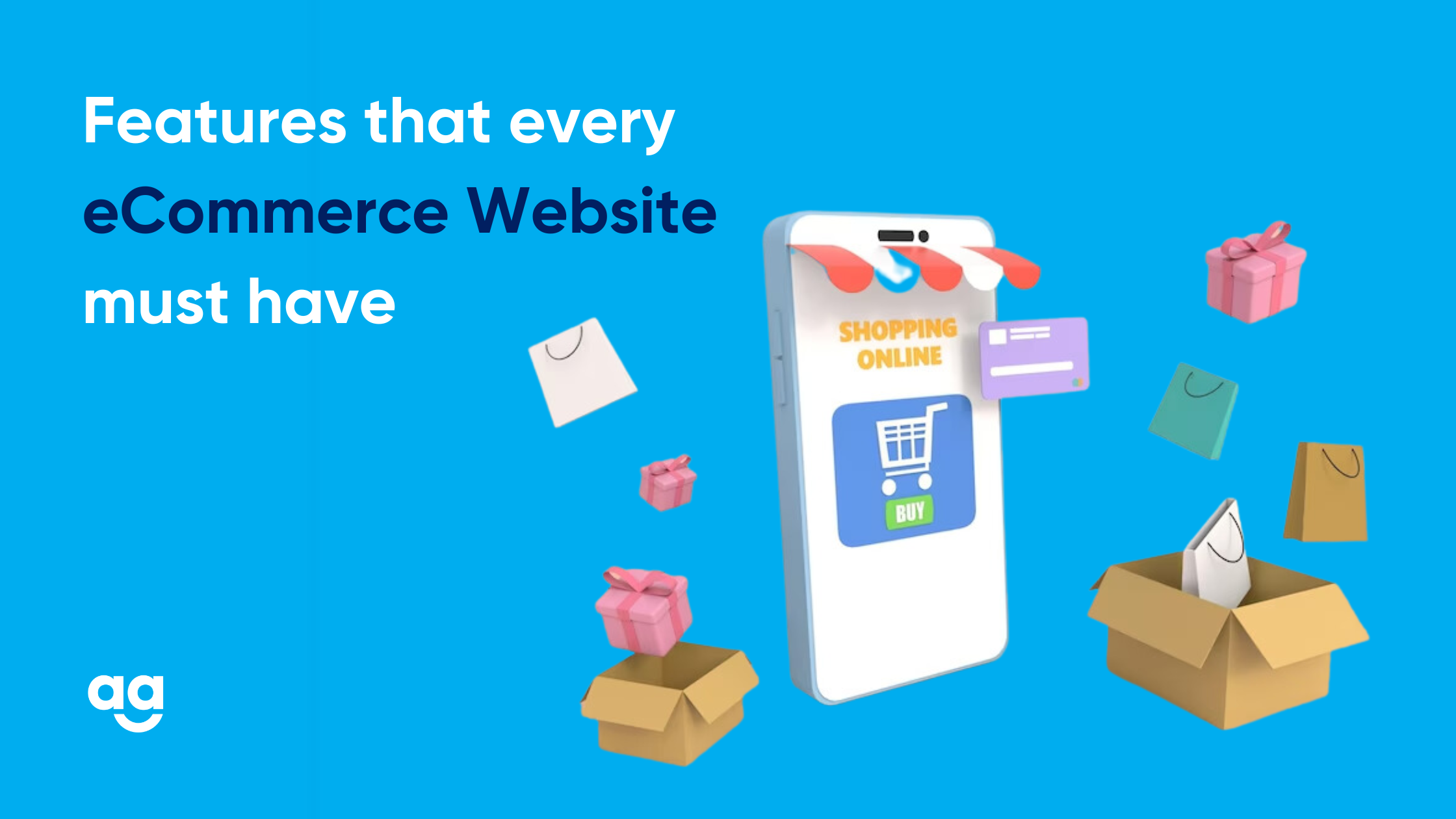Introduction
The ecommerce industry has developed over the years and now ranks among the best ways to stay in touch with clients, distinguish yourself from competitors, and achieve success. The competition in the digital world has risen as practically everyone wants to establish an online business.
To stay ahead, people constantly experiment with new methods and strategies to build their brand online. As an ecommerce business owner, being competitive is a constant challenge.
Everyone running an online business is focused on increasing revenue and the user-friendliness of their ecommerce business. Are you too looking for ways to maximize your ecommerce business?
Here is a list of 6 features of ecommerce to make your website successful. By implementing these features you can create an effective e-commerce website.
6 Must-Have Features for an E-Commerce Website
If you want to serve a wide range of customers worldwide, who can shop at any time from anywhere, then these features of e-commerce website will surely improve how your online business is represented in the digital space.
For an effective and appealing e-commerce website, there are a few key components that we have outlined below.
-
Customization
The first stage in developing an ecommerce customer success plan in the ecommerce industry is to recognize and comprehend each client’s purchasing trends and intrinsic preferences. By understanding their needs and requirements, you can customize your offerings and that in turn will help build a base of loyal customers.
Note: Nowadays, people prefer to make purchases through their mobile phones. Make sure that your ecommerce website is responsive since it makes the ecommerce website user-friendly and simple to use, thus boosting online product sales. -
User Friendliness
According to research, most ecommerce website visitors head straight for the navigation on the website when they land on a new website. Furthermore, humans are known for their short attention span.
So, to help your website visitors navigate easily through the ecommerce website, whether they are placing an order or just browsing or finding customer service contact details, it is crucial to keep it navigation user-friendly.
Tip: To optimize your ecommerce website and make it mobile-responsive, keep your menu vertical to make it easier to navigate. -
Customer Support
Take steps to offer consistent, round-the-clock customer service for fixing customer problems or responding to inquiries to build a solid relationship with customers.
Your ecommerce website must provide your email contact details, and should also be able to reach you on your ecommerce website through online chat, contact form, live chat, or even have their simple questions answered in the FAQs section. -
Multiple Payment Options
Another feature to make the customer’s journey on your ecommerce website easier and hassle-free is to have multiple payment options. It will not only reduce drop-outs at the time of check-out but will also make payments a breeze for your customers.
In this day and age of technology that enables one tap payments, it is essential to offers advanced payment options. The more options that customers have to make their payments, such as Credit Card, Debit Card, UPI, COD, and more, the higher are the chances of them going through with the order. -
High-Quality and Informative Product Pages
From banner images to product photos, all images need to be of high quality. To ensure that, use pictures with high resolution clicked using professional industry-standard equipment. Avoid using blurry photos and be careful of misspelled words on the ecommerce website. Such errors can make your customers lose faith in your business setup.
Do not forget that along with high resolution imagery, it also needs to connect with your target customer and must add value to them.
Customers always prefer seeing multiple product photos from multiple angles and to be able to zoom in and check out the details themselves. Although high resolution images take longer to load, the content and images need to ideally load quickly. Therefore, keep technical considerations in mind. -
Checkout Process
The checkout page could potentially discourage customers from going through with their purchases if it has errors. To avoid that, ensure that your ecommerce website’s checkout page has:
a) Intuitive design to enable your customer to go through with the purchase by putting in minimum effort and thought. The process should be simple and easy.
b) Clearly state all shipping costs and other related information to remove ambiguity from the process. Unexpected costs added at the time of purchase is a common reason for cart abandonment. Transparency goes a long way in retaining and nurturing relationships with customers.
c) There should be a clearly defined return and refunds policy during checkout. It adds a sense of reassurance for your new customer during checkout.
Remember, the checkout process should be designed keeping ease of use and reassurance in mind.
Wrapping Up
Remember, it is not a herculean task to provide your customers with an excellent shopping experience on your ecommerce website. It all boils down to identifying their requirements, listening to their feedback and keeping up with the trends in the ecommerce business.
You do not need to worry and every new feature out there on your platform. However, you should consider those that your customers normally expect from the best retailers in your business vertical.







 Shipping
Shipping







